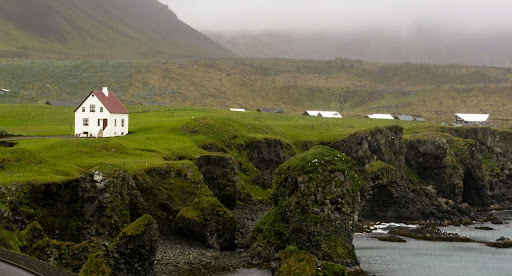Traveling Iceland: The Best Ways To Navigate And Explore The Island
Iceland, a land of stunning contrasts and natural beauty, has become a top destination for travelers seeking adventure and unique experiences.
Author:Michael RachalReviewer:Finn WildeJun 04, 202470 Shares35.2K Views

Iceland, a land of stunning contrasts and natural beauty, has become a top destination for travelers seeking adventure and unique experiences.
However, to fully appreciate and explore this island nation, careful planning of transportation is essential.
Navigating Iceland efficiently can make the difference between a good trip and an extraordinary one, ensuring that travelers can reach all the remarkable sights without hassle.
Why Choose Iceland?
Iceland's allure lies in its unparalleled natural attractions. Visitors are drawn to the island's unique geological features, such as the powerful Gullfoss waterfall, the geothermal area of Geysir, and the stunning Jökulsárlón glacier lagoon.
The diverse landscape, which includes black sand beaches, volcanic craters, and vast lava fields, provides endless opportunities for exploration and adventure.
Navigating Iceland: Key Considerations
When planning a trip to Iceland, understanding the local weather conditions is crucial. Iceland's weather can be unpredictable, with sudden changes that can impact travelplans.
It's not uncommon to experience sunshine, rain, and snow all in a single day, especially during the shoulder seasons. Winter months bring shorter daylight hours and icy road conditions, while summer offers the advantage of the midnight sun, providing nearly 24 hours of daylight for exploration.
Iceland's road infrastructure is well-developed, particularly the Ring Road (Route 1), which encircles the entire island and connects most of the major attractions.
However, many of the more remote and scenic areas are accessible only via gravel roads and mountain passes, which can be challenging for inexperienced drivers. It's important to be aware of the driving conditions and choose the right type of vehicle for your journey, ensuring a safe and enjoyable trip.
Traveling By Car: The Ultimate Freedom
Renting a car allows travelers to set their own pace, make spontaneous stops, and reach remote destinationsthat are often inaccessible by public transport. This flexibility is crucial for experiencing Iceland's diverse landscapes and hidden gems.
Benefits Of Renting A Car
Renting a car in Iceland comes with several advantages. It provides the convenience of traveling on your own schedule, without the constraints of bus timetables or guided tour itineraries.
This autonomy means you can linger at your favorite spots, take detours to explore off-the-beaten-path locations, and create a personalized travel experience.
Having a car allows you to carry your luggage and travel essentials comfortably, making your journey more convenient and enjoyable.
Go Iceland Car Rental Service
For those considering car rental in Iceland, Go Iceland Car Rental Serviceis a highly recommended option.
With a wide range of vehicles suited for different needs and budgets, Go Iceland ensures that travelers can find the perfect car for their adventure.
Their fleet is well-maintained, and their service includes comprehensive insurance options, 24/7 roadside assistance, and convenient pick-up and drop-off locations.
One traveler noted, "Go Iceland made our trip unforgettable. The car was in perfect condition, and the staff gave us great tips for our journey." Another customer shared, "Renting from Go Iceland was a breeze. The vehicle was perfect for the challenging roads, and the service was top-notch."
Public Transportation Options
While renting a car is the preferred choice for many, public transportation is another option for navigating Iceland. The country offers a network of bus services that connect major towns and tourist attractions. These buses are reliable and comfortable, making them a viable option for those who prefer not to drive.
Iceland's main bus operator, Strætó, runs routes across the island, including services to popular destinations such as Reykjavik, Akureyri, and the Golden Circle. During the summer months, additional bus services operate to cater to the influx of tourists, providing access to more remote areas and hiking trails.
Limitations And Considerations For Tourists
However, relying on public transportation has its limitations. Bus schedules can be infrequent, particularly in the off-season, and certain attractions may not be easily accessible without additional transportation. Public buses do not offer the same flexibility as a rental car, potentially limiting the ability to explore Iceland's more secluded and less touristy spots.
Guided Tours: A Stress-Free Option
For travelers who prefer a more structured and hassle-free experience, guided tours are an excellent alternative. These tours provide comprehensive itineraries and knowledgeable guides, ensuring you see the best of Iceland without the stress of planning and navigating.
Types Of Guided Tours Available
Guided tours in Iceland come in various forms, from day trips to multi-day excursions. Popular options include Golden Circle tours, Northern Lights tours, and glacier hikes. These tours often include transportation, meals, and entry fees, making them a convenient all-inclusive option.
Pros And Cons Compared To Self-Driving
The primary advantage of guided tours is the ease and convenience they offer. With a professional guide handling the logistics, travelers can relax and focus on enjoying the sights.
Guided tours also provide valuable insights and historical context, enriching the travel experience. On the downside, tours operate on fixed schedules and may lack the flexibility to explore at your own pace. They can also be more expensive than renting a car, especially for larger groups or families.
Top Routes And Destinations
Iceland's diverse landscapes and stunning natural attractions are best experienced by exploring some of its most famous routes. The Golden Circle and the Ring Road are two of the most popular itineraries, offering a range of breathtaking sights and experiences.
Golden Circle Route
The Golden Circle is a 300-kilometer loop from Reykjavik into central Iceland and back. It includes three of Iceland's most famous attractions: Þingvellir National Park, the Geysir Geothermal Area, and Gullfoss Waterfall. This route is perfect for a day trip and offers an excellent introduction to Iceland's natural beauty and geological wonders.
Ring Road
For those with more time, the Ring Road (Route 1) offers a comprehensive tour of Iceland. This 1,332-kilometer road encircles the entire island, passing through some of Iceland's most diverse and dramatic landscapes.
Key stops along the Ring Road include the black sand beachesof Vík, the glaciers and icebergs of Jökulsárlón, the geothermal area of Lake Mývatn, and the majestic Dettifoss waterfall.
Notable Landmarks And Attractions
In addition to these routes, several landmarks are must-visits for any traveler in Iceland. The Blue Lagoon, located near Reykjavik, is a famous geothermal spa renowned for its milky blue waters.
The Snæfellsnes Peninsula, often called "Iceland in Miniature," features a bit of everything, from volcanic craters and lava fields to picturesque fishing villages and stunning coastlines.
Travel Tips And Safety Advice
Traveling in Iceland requires some preparation to ensure a safe and enjoyable trip. Here are some essential tips:
- Check the Weather: Iceland's weather can change rapidly. Always check the weather forecast before setting out and be prepared for sudden changes.
- Know the Road Conditions: Icelandic roads can be challenging, especially in winter. Visit the Icelandic Road and Coastal Administration website for up-to-date road conditions.
- Stay on Marked Paths: To protect Iceland's delicate ecosystem, always stay on marked paths and roads.
- Pack Appropriately: Bring warm, waterproof clothing, even in summer. The weather can be unpredictable, and it's essential to stay dry and warm.
- Emergency Contacts: Familiarize yourself with emergency contact numbers and locations of the nearest hospitals and service stations.
Exploring Iceland is a journey of a lifetime, offering unparalleled natural beauty and adventure. Discovering the wonders of Iceland is an adventure that promises unforgettable memories and breathtaking landscapes.

Michael Rachal
Author
Michael Rachal believes that luxury lies in the details. With over 20 years of experience in the luxury travel industry, he has crafted hundreds of bespoke itineraries for clients seeking personalized, unforgettable experiences.
Whether guiding clients through private cultural tours or curating culinary journeys with world-renowned chefs, Michael ensures that each trip is tailored to perfection.
His ability to anticipate needs and exceed expectations has earned him a reputation as a leading expert in luxury travel.

Finn Wilde
Reviewer
For Finn Wilde, the wilderness is more than just a destination - it’s a way of life. Over the past decade, he has led multiple expeditions in some of the world’s most remote regions, from the icy fjords of Greenland to the rugged trails of Patagonia.
Finn emphasizes sustainability in all of his adventures, helping participants connect with nature while promoting responsible exploration. His expeditions inspire individuals to explore the great outdoors while fostering a deep respect for the environment.
Latest Articles
Popular Articles



